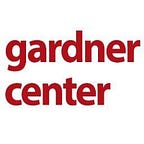Voices for Equity: Youth Leadership in Oakland Community Schools
A Q&A with Kendra Fehrer
Congratulations on the new book, Kendra! Community Schools: People and Places Transforming Education and Communities is an important contribution to the literature on the community schools movement. We’d like to ask you a few questions about the chapter you and Aurora Lopez, your partner at Oakland Unified contributed.
You write that youth participation is a powerful force for social change. What role can youth themselves play in advancing meaningful civic engagement and educational equity for all students?
In Oakland, youth have been drivers and advocates for meaningful policy change in spaces where they typically have had little voice. Youth helped shift district graduation policy requirements; youth were major stakeholders in the district’s community schools strategic plan. Most of our schools and districts in this country are set up to see youth as “recipients” of their education, not as co-creators.
Yet as one of the youth featured in the chapter stated,
youth are the ones sitting in classrooms receiving the education — who better than them to understand what’s working, what’s not, and what needs to change?
Our founding director, Milbrey McLaughlin, and our namesake, John W. Gardner, understood that the benefit of youth participation is mutual. Youth benefit from meaningful participation and civic engagement in a myriad of ways: increased responsibility, social-emotional development, critical thinking, and sense of belonging. And meaningful youth participation can also generate more equitable and rigorous policies — ultimately benefiting the community at large. Our chapter underscores both these points.
You situate your chapter in the historical context of Oakland youth’s student activism. Why is that history important?
We thought about that question a lot in writing the chapter. The story of youth voice in Oakland is rooted in community mobilization, equity, racial justice, and civic participation. This framing informed the early efforts of what youth voice in an education setting could look like. The adult allies who helped establish OUSD’s Meaningful Student Engagement policies rooted their processes in a deeper social analysis of structures of power. Their efforts to make space for youth were not just tactical. They were about shifting the system to reflect the ideals of equity and social and racial justice.
To make youth participation meaningful, adult allies must do more than solicit their input on a prescribed set of options. They must be willing to step back and give youth space to write their own narrative.
Because adult allies had experience participating in social movements, they were able to create spaces where youth could contribute their voices in meaningful and transformative ways.
To what extent are adults in Oakland community schools making space for meaningful youth participation?
This is one of the most important takeaways from the chapter. Young people can do amazing things. But student leaders are not necessarily the straight-A, high achieving students who come to class on time every day and have a robust selection of extra-curricular activities. OUSD’s adult allies look for leadership through a more inclusive, less narrow lens. They look for students who have something to say. This may be the student who acts out in class, who cuts school, or gets rowdy with friends in the halls. An adult could say, “That student doesn’t care,” or, “that student isn’t a ‘good example’.” But with the right conditions, structures, and opportunities, that student absolutely can reflect critically on what’s working and not working regarding their education, and play a role in creating solutions.
What Oakland’s story teaches us is that kids all have potential, and it is our responsibility as adults who make decisions in schooling, to create conditions that allow all kids to feel confident and capable to give voice to their experience, and take ownership over their learning and schooling.
Can you highlight one important lesson learned from the OUSD community schools experience to date as it relates to youth voice?
If there is one take-away, it is the importance of including youth in the development and visioning of community schools. If you listen closely to students, as they did in Oakland, you may find that the things that students are requesting — holistic supports for students, caring relationships with adults, engaging and culturally responsive classrooms — are all things that community schools support. Community schools present an opportunity to rethink the traditional notion of what a school does and who is included in the school community. Students absolutely can be critical stakeholders and active participants in the process of creating and sustaining community schools.
Kendra Fehrer is a senior research associate at the John W. Gardner Center for Youth and their Communities at Stanford University.
